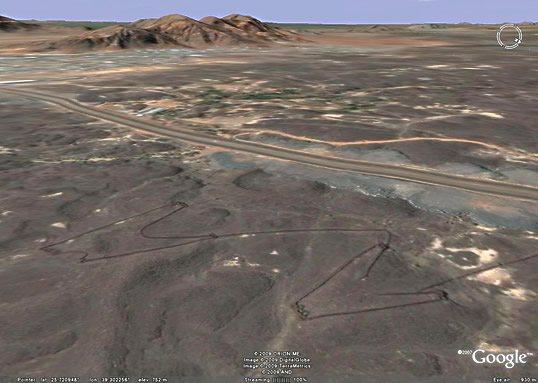|
News News
For nearly a century, archeologists have routinely used aerial photo-graphs as a key tool for discoveries and investigations. In western Europe, the discovery through aerial reconnaissance oftens of thousands of previously unknown sites has transformed the way the past is interpreted and explained. In discussions of archeology, aerial views are often far more informative than ground photographs because the aerial views show the whole site within its geographical and environmental context, and they often show patterns too subtle or confusing to be recognizable on the ground. In the Middle East as a whole, there is a growing awareness of the value of this technique, particularly given the volume and complexity of remains and the need to balance preservation with rapid industrial development. Jordan has instituted and supports a program of aerial archeology, to which I have contributed. Recently, however, archeologists have begun to use the satellite imagery publicly available since the launch in 2005 of Google Earth, particularly since its gradual incorporation, beginning in 2007, of high-resolution images. As a result, over some Arab countries—Jordan, Syria and Lebanon particularly—the resolution of available images is now generally high enough to conduct reliable, general archeological surveys. Thanks also to the strong archive of historical aerial photographs from these regions, many dating from World War i to 1948, the new information can often be compared to the more distant past. READ MORE |





